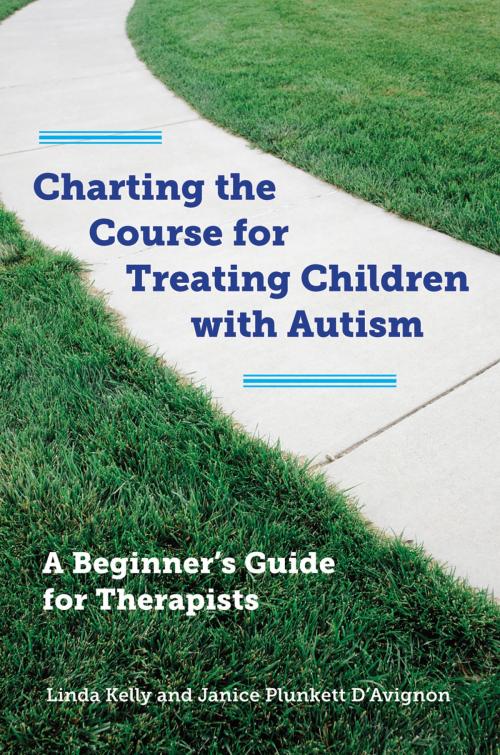Charting the Course for Treating Children with Autism: A Beginner's Guide for Therapists
Nonfiction, Health & Well Being, Psychology, Child & Adolescent, Child Psychology, Mental Health| Author: | Linda Kelly, Janice Plunkett D'Avignon | ISBN: | 9780393709599 |
| Publisher: | W. W. Norton & Company | Publication: | March 24, 2014 |
| Imprint: | W. W. Norton & Company | Language: | English |
| Author: | Linda Kelly, Janice Plunkett D'Avignon |
| ISBN: | 9780393709599 |
| Publisher: | W. W. Norton & Company |
| Publication: | March 24, 2014 |
| Imprint: | W. W. Norton & Company |
| Language: | English |
A practical, hands-on guide for working with children diagnosed with high functioning autism spectrum disorders.
Therapists play a crucial role in helping children and their families as they navigate the often stormy course of living with autism spectrum disorders (ASD). As cases of autism are increasingly diagnosed, the number of therapists with specialized training cannot keep pace. What is the clinician without prior experience with this disability to do when considering working with a child on the autism spectrum?
This “start here” book—a practical beginner’s guide to ASD for therapists—provides the answer. Without getting bogged down in the complexity of the disorder or attempting to turn practitioners into autism specialists, it points therapists—novices and seasoned alike—in the right direction so they’re better equipped to provide support.
Because autism can manifest in so many different ways, no cookie-cutter treatment exists and therapists need to be conversant with the basics, from assessment and treatment approaches to common therapeutic issues that can arise. This book serves as an invaluable road map.
Viewing ASD as a social communicative disorder, the authors provide a sound background of its manifestations and therapeutic interventions, helping therapists to define treatment issues and prepare for potentially difficult client encounters. Filled with practical insights and guidance, the book explains how to ask the right questions of parents and how to assess their answers. It presents a philosophy to guide parents and others in changing their perceptions of the child’s disability so as to pave the way for effective approaches to be used within the child’s environment. Concrete tools are provided to help determine “goodness of fit” between the therapist and client, in addition to several helpful reproducible intake and assessment forms available for download on an accompanying CD.
Charting the Course is an important therapist’s guide representing an all-encompassing approach to working not only with children and their parents, but also with their siblings, family members, and those in the community who are involved in their lives. Ultimately, this book provides a reassuring anchor for any clinician new to treating this disability as well as for those who are seeking alternative approaches to their ongoing work with children diagnosed with ASD.
A practical, hands-on guide for working with children diagnosed with high functioning autism spectrum disorders.
Therapists play a crucial role in helping children and their families as they navigate the often stormy course of living with autism spectrum disorders (ASD). As cases of autism are increasingly diagnosed, the number of therapists with specialized training cannot keep pace. What is the clinician without prior experience with this disability to do when considering working with a child on the autism spectrum?
This “start here” book—a practical beginner’s guide to ASD for therapists—provides the answer. Without getting bogged down in the complexity of the disorder or attempting to turn practitioners into autism specialists, it points therapists—novices and seasoned alike—in the right direction so they’re better equipped to provide support.
Because autism can manifest in so many different ways, no cookie-cutter treatment exists and therapists need to be conversant with the basics, from assessment and treatment approaches to common therapeutic issues that can arise. This book serves as an invaluable road map.
Viewing ASD as a social communicative disorder, the authors provide a sound background of its manifestations and therapeutic interventions, helping therapists to define treatment issues and prepare for potentially difficult client encounters. Filled with practical insights and guidance, the book explains how to ask the right questions of parents and how to assess their answers. It presents a philosophy to guide parents and others in changing their perceptions of the child’s disability so as to pave the way for effective approaches to be used within the child’s environment. Concrete tools are provided to help determine “goodness of fit” between the therapist and client, in addition to several helpful reproducible intake and assessment forms available for download on an accompanying CD.
Charting the Course is an important therapist’s guide representing an all-encompassing approach to working not only with children and their parents, but also with their siblings, family members, and those in the community who are involved in their lives. Ultimately, this book provides a reassuring anchor for any clinician new to treating this disability as well as for those who are seeking alternative approaches to their ongoing work with children diagnosed with ASD.















